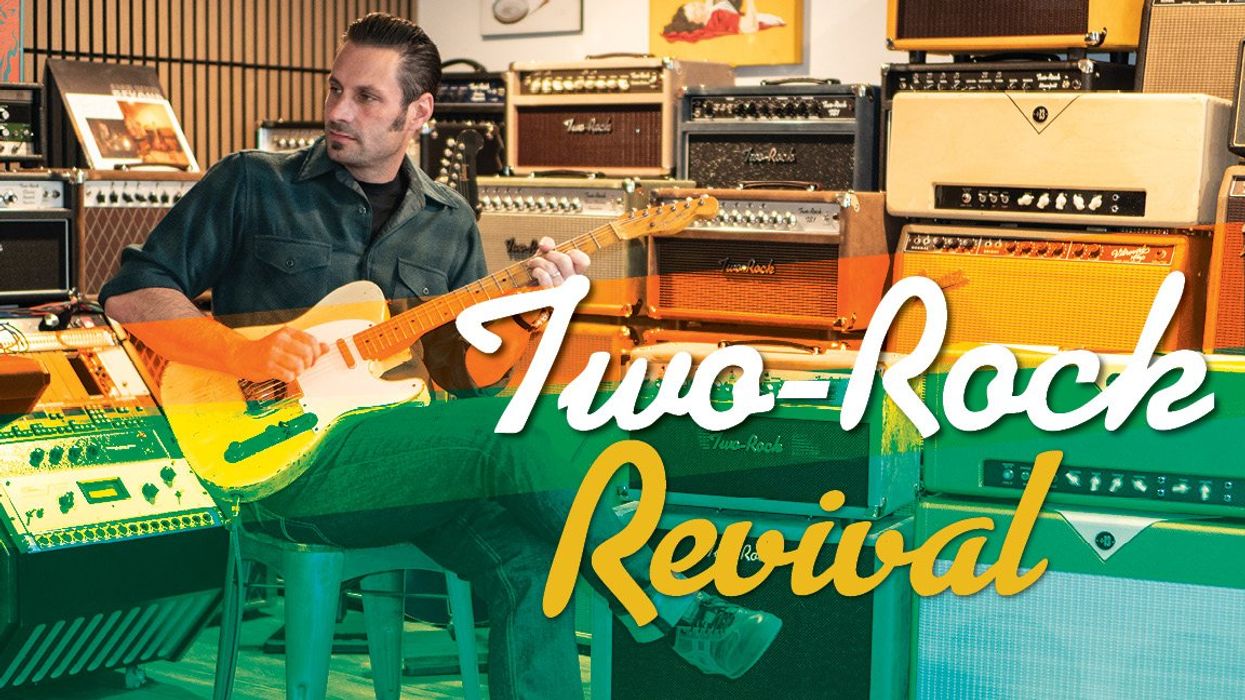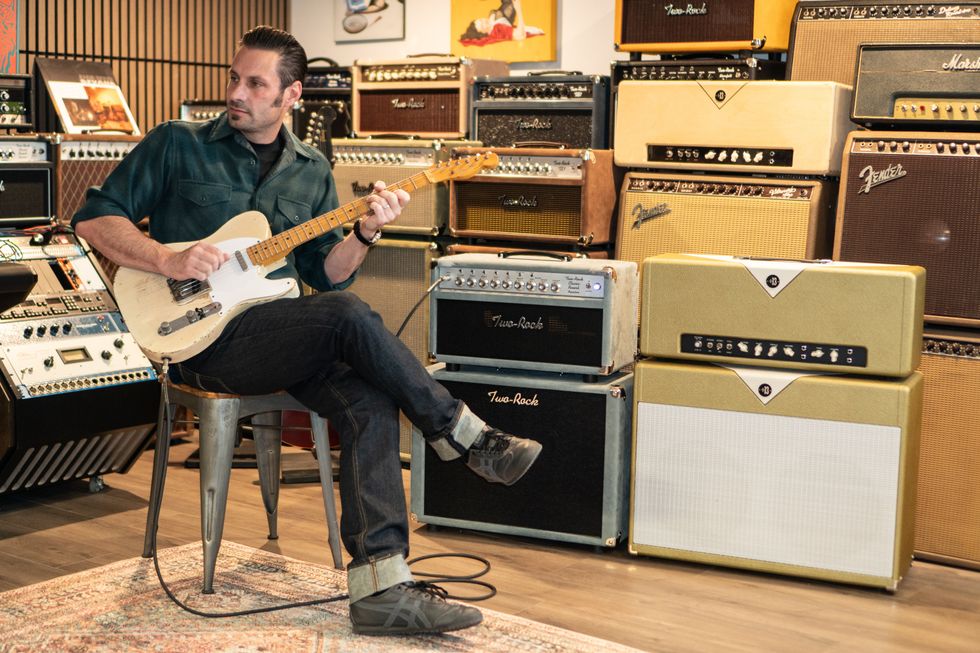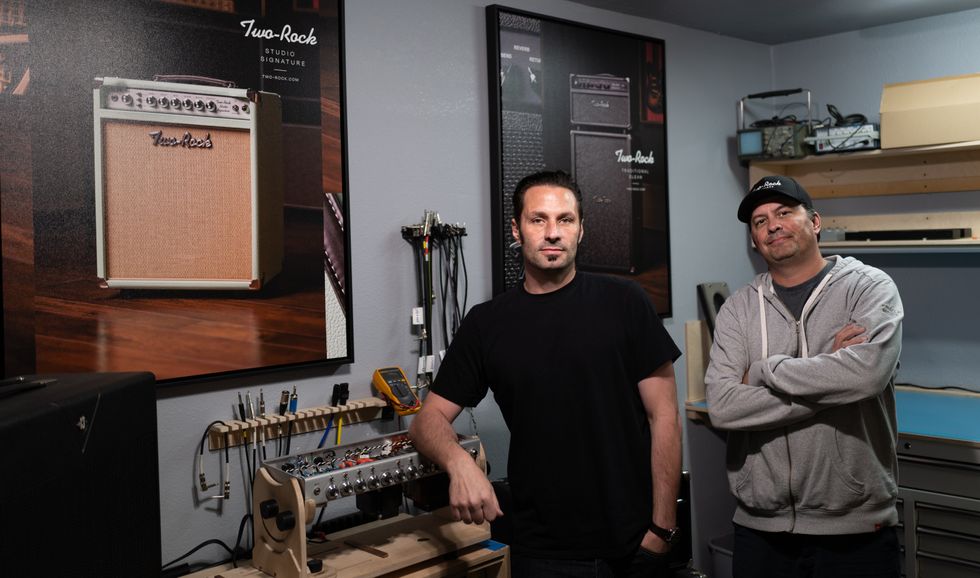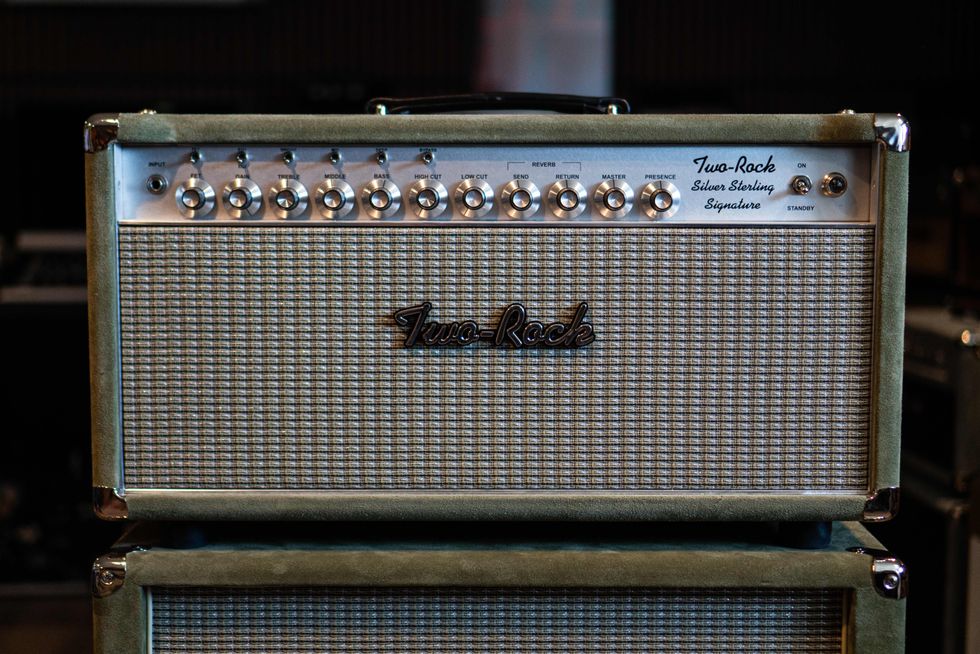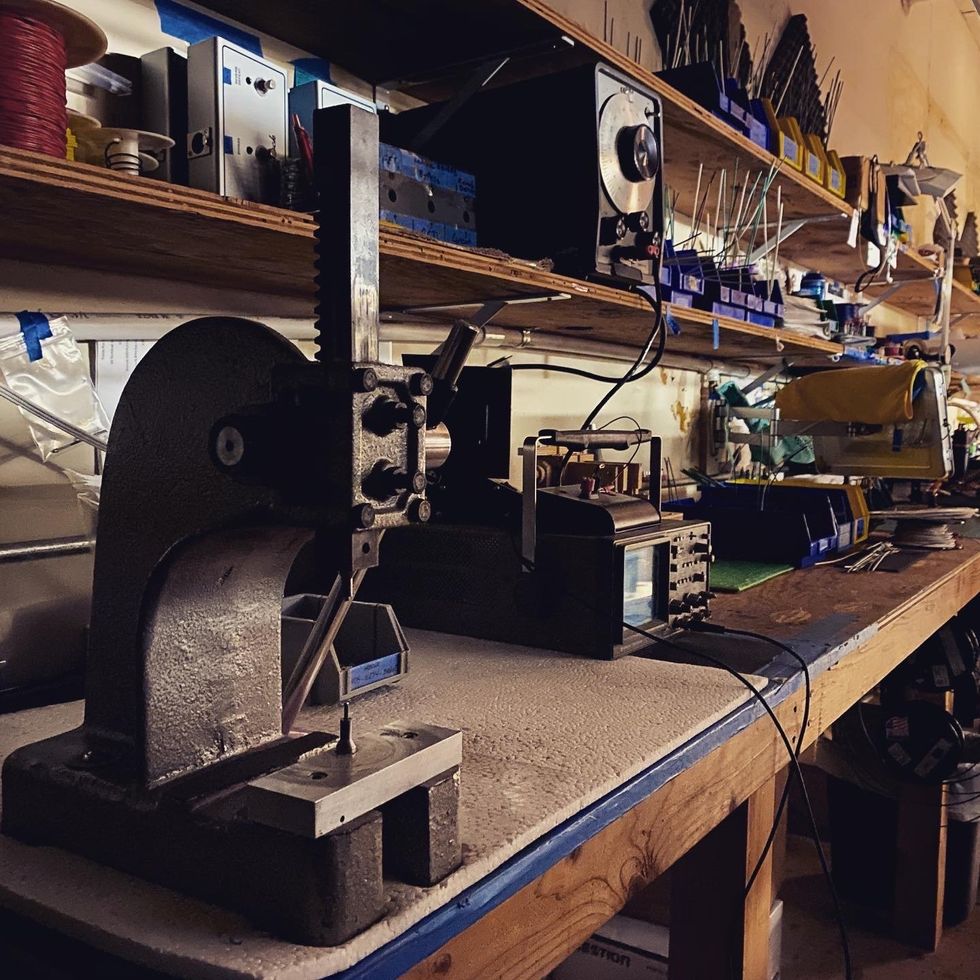The Messthetics overrun the barriers of genre—rock, jazz, textural music, and whatever else gets in their creative path—like the bulls of Pamplona. That is … if those bulls could musically pirouette direction and dynamics in an instant. Which, of course, they can’t, because bulls are exclusively vocalists, and of limited range, unless you also count the thundering of their hooves as percussion.
But the Messthetics can, and do, which makes their three albums and live performances joyful journeys through the inner and outer sanctums of sound and melody. Like the Mahavishnu Orchestra or ’80s King Crimson, they create instrumental landscapes that astound, punch, and transport.
The heartbeat of the band is the rhythm section of Brendan Canty on drums and Joe Lally on bass, who were already legends in the indie-rock world before the Washington, D.C.-based trio formed in 2016, thanks to their history in Fugazi. The melodic and harmonic wildcard is guitarist Anthony Pirog, who has few peers in the scope and imagination he brings to the instrument. He is an omnivorous student and musician, with a command of rock, jazz, blues, folk, ambient, and contemporary classical music. The documentation is in his substantial catalog of recordings, which, besides the Messthetics’ releases, range from solo albums and various duos including Janel & Anthony; guest turns with drummer William Hooker and other cutting-edge players; the Mahavishnu tribute Five Time Surprise with fellow outsider-guitar-giant Henry Kaiser; and the Spellcasters, a project steeped in the styles of Danny Gatton and Roy Buchanan.
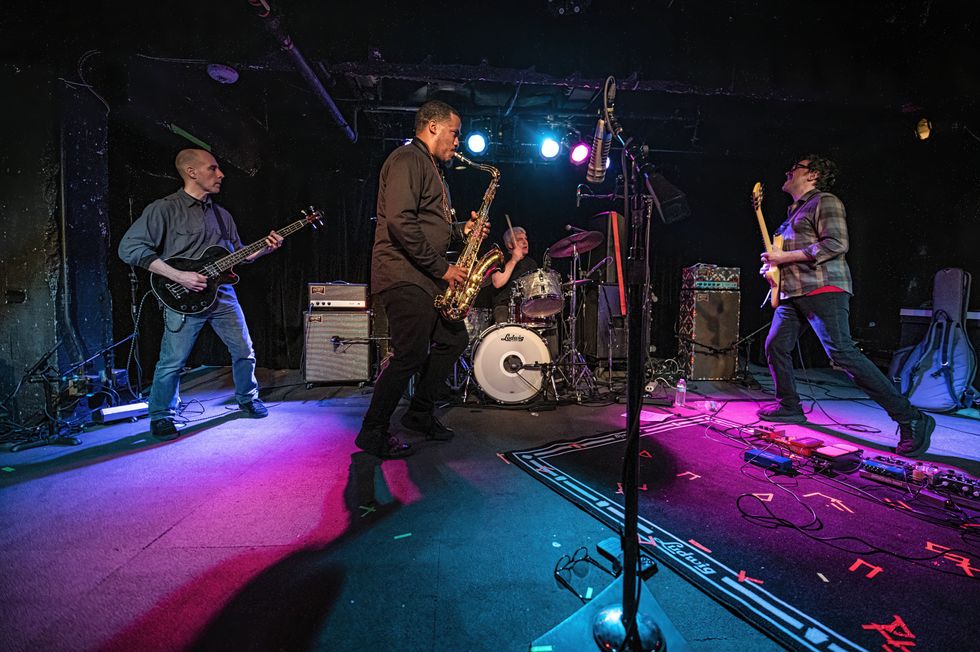
The Messthetics—bassist Joe Lally, drummer Brendan Canty, and guitarist Anthony Pirog—onstage with James Brandon Lewis at Washington D.C.’s Black Cat in March 2023.
Photo by David LaMason
Recently, Pirog has been gigging and touring behind two new keystone works: Janel & Anthony’s New Moon in the Evil Age and The Messthetics and James Brandon Lewis. His partner in Janel & Anthony, and in life, is Janel Leppin, a cellist and composer with an equally free-ranging sensibility. And New Moon in the Evil Age is an entrancing double album that balances melodic exploration with a modernist folk-rock sensibility. It’s easy to get lost in its 20 compositions. On The Messthetics and James Brandon Lewis, the band enlists the saxophonist, who is deep in the post-Coltrane-and-Ayler school of free-jazz horn and composition, as Pirog’s melodic and harmonic foil. And the results are astounding. Imagine Sonny Sharrock’s ’60s-inclined Ask the Ages with a more bare-knuckled but equally exceptional rhythm section. The balance of beauty and brutality is perfect within its jazz-informed structure. Some pieces, like “Moreso,” are essentially heads with plenty of space for these daring improvisors to unfurl. Others, like “Railroad Tracks Home,” are textural beasts with strong melodic spines.
“We took two or three months to write and arrange the record,” explains Pirog, who brought Lewis into the fold after he and Lewis met working with William Hooker. “When the Messthetics are not touring, we usually meet twice a week to rehearse, and the rehearsals are essentially writing sessions—a good chance to just bounce ideas around and get a kind of group vocabulary going. So, this album is different from our first two records, where we were trying to explore the possibilities of what the guitar trio can do, in more of a through-composed way. As soon as we knew James was involved, that opened up the whole realm of different textures where I could be part of the rhythm section, or I could stop playing altogether.
“Being in the Messthetics has fueled me to do what I wanted to do,” Pirog continues. “Joe and Brendan play with an intensity I find very inspiring. And the same is true with James. He’s the perfect fit, energetically. We have a similar approach to melody—a kind of free playing and weaving in and out, so when we’re soloing together it’s amazingly fun. That’s really what it amounts to: Everyone’s having a great time and you have an understanding that you’re on the same page and things just flow, without any discussion. I could step on an Octavia and double a melody with James with a close tone that really balances well with the sound of his saxophone. At some points on the album, I can’t even really tell where the line is between James’ sound and my sound.”
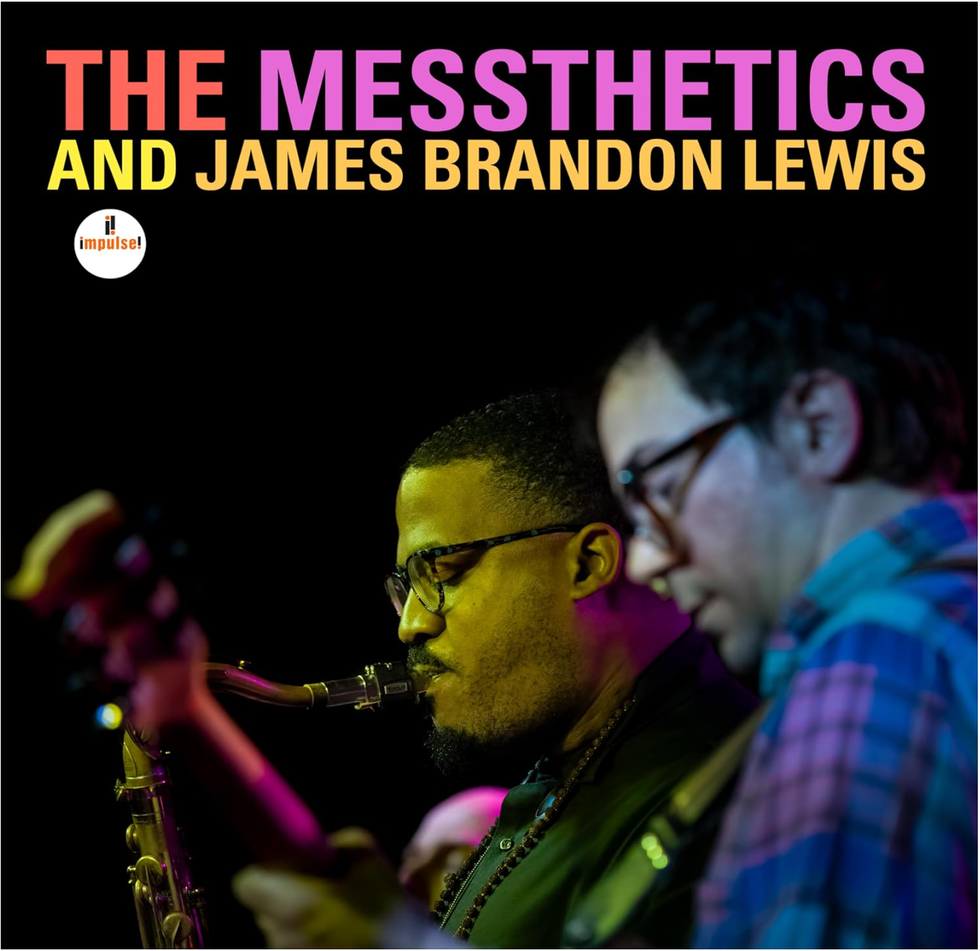
On their new album, the band enlists the saxophonist James Brandon Lewis as Anthony Pirog’s melodic and harmonic foil. The balance of beauty and brutality is perfect within its jazz-informed structure.
And as any guitarist knows, sound is an important element of the magic—arguably more important than the notes plotting its course. Pirog is an avid and highly attuned pedal user, with a huge vocabulary of tones and effects at his disposal. He is quite precise in how his stompboxes are deployed. Pirog can turn his Abernethy Sonic Empress, which he runs through a flexible, punchy two-channel, 30-watt Benson Vincent head (“It has incredible clarity and presence to every aspect of the tone”) and cab, into a spacecraft or a growling tiger, utterly annihilate his tone or make it buttery and voice-like, or simply rock out like a maniac, with the push of a few buttons and carefully set dials.
For that reason, and because of the wide range of playing styles under his command, we asked Pirog to share his pedalboards for various gigs: rock, improv, jazz, and roots. “When I’m putting a pedalboard together,” he explains, “there’s nothing too crazy going on. I’m thinking about the source material, which can kind of be pitch-related or timbre-based. Then sometimes I’ll add compression or noise pedals. I’ll put anything that I want to control as the source sound before the volume pedal. Sometimes that can oscillate and create feedback, so I use the volume pedal so it won’t just be blaring. What comes to mind is William Hooker. I did a duo show with him in D.C., and he wanted me to play feedback. So, I put my fuzz pedal on with the gate wide open. Then I’ll consider gain pedals, distortions, sometimes modulation. I don’t have an exact method for modulation. Sometimes it’s before drive and sometimes it’s after, based on the pedal or the pedal type. Then, ambient delay, reverb, and I’ll get into looping stuff at the end of my chain. That’s the basic idea.”
While Anthony’s preferences might change gig to gig, as he’s always on the lookout for new pedals, here are his current pedalboard setups by genre.
Messthetics/Rock Board
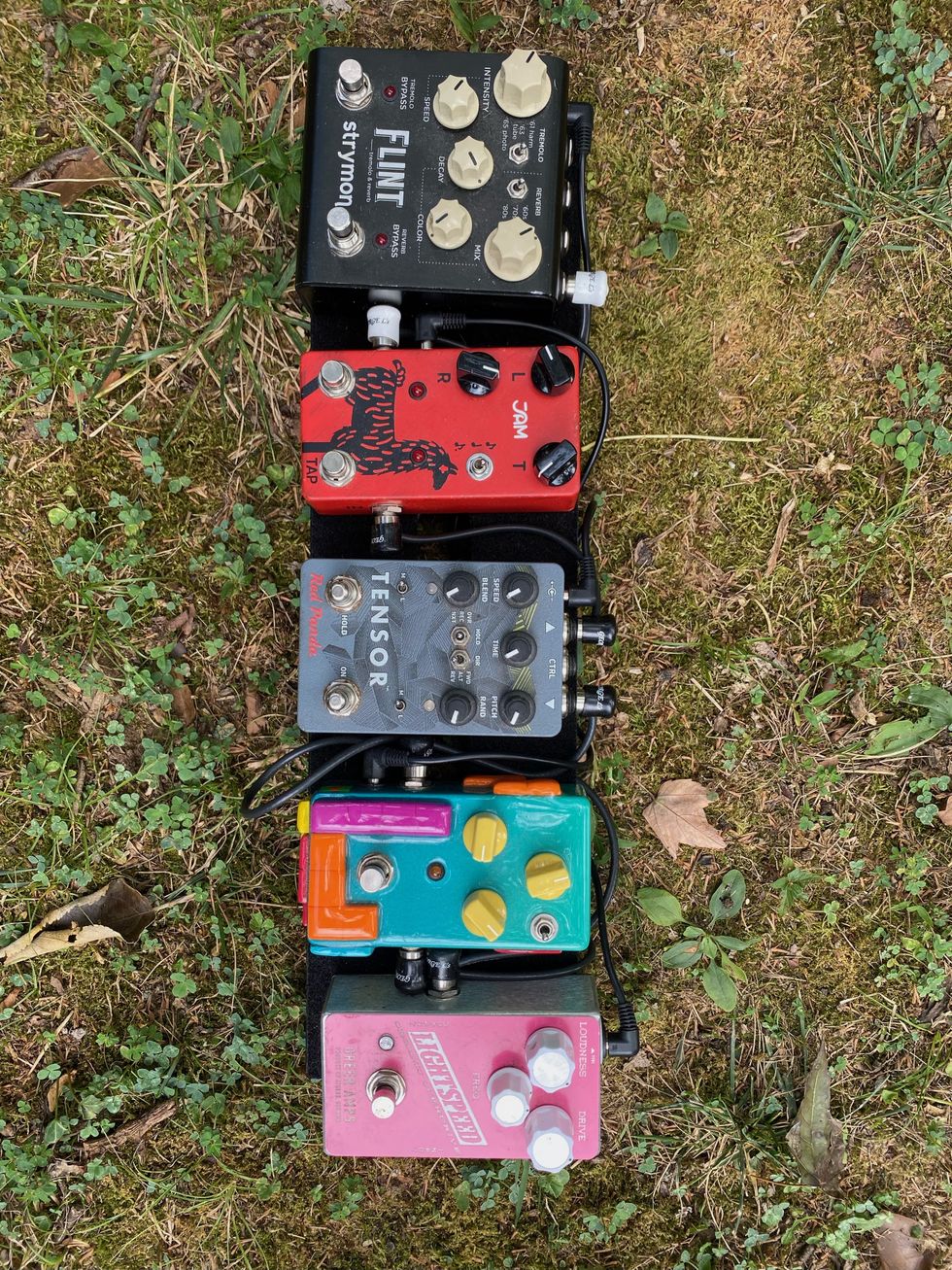
Some of Pirog’s favorite pedals include the Strymon Flint, JAM Pedals Delay Llama, Red Panda Tensor, JAM Pedals Rattler LTD, and Greer Amps Lightspeed.
Since the Messthetics’ recent compositions from The Messthetics and James Brandon Lewis are essentially heads with lots of room for free-ranging improvisation, Pirog has to be ready to create sounds and travel in different musical directions at less than a moment’s notice. To that end, he needs a wide array of overdrive/fuzz, pitch shifting, modulation, and volume effects.
This is currently what’s at his feet:
• Collector Effectors Zonk Machine (octave fuzz)
• DigiTech Whammy
• Classic Amplification CV-2 (Uni-Vibe clone)
• Klon Centaur
• Lehle volume pedal
• Greer Amps Lightspeed Organic Overdrive
• JAM Pedals Rattler LTD
• Red Panda Tensor
• JAM Pedals Delay Llama
• Strymon Flint (’60s reverb and ’61 harmonic tremolo setting)
• Eventide H9
• Neunaber Immerse Reverberator
Experimental/Improv Board

While the Lehle volume pedal is a staple, the Neunaber Immerse Reverberator and Eventide H9 show up on Pirog’s rock and experimental/improv pedalboards.
Of course, experimentation is a big part of the Messthetics’ aesthetic, but for free-improv gigs, Pirog needs some additional, very specific tools for layering sounds and generating atmospheric elements.
Let’s call this pedal roster his improv/experimental board:
• Collector Effectors Zonk Machine (octave fuzz)
• 4ms Nocto Loco (oscillating octave pedal)
• DigiTech Whammy
• Classic Amplification CV-2 (Uni-Vibe clone)
• Klon Centaur
• Lehle volume pedal
• Gamechanger Audio Plus (sustain)
• MASF Possessed (glitch/oscillation)
• Greer Amps Lightspeed Organic Overdrive
• JAM Pedals Rattler LTD
• Red Panda Tensor
• Montreal Assembly Count to 5 (delay/sampler/octave)
• JAM Pedals Delay Llama
• Strymon Flint (’60s reverb and ’61 harmonic tremolo setting)
• Eventide H9
• Neunaber Immerse Reverberator
• 4ms Noise Swash (oscillating noise pedal)
• EHX 16 Second Digital Delay reissue with additional foot controller (sound-on-sound looper)
• Zvex Lo-Fi Loop Junky
Jazz Board
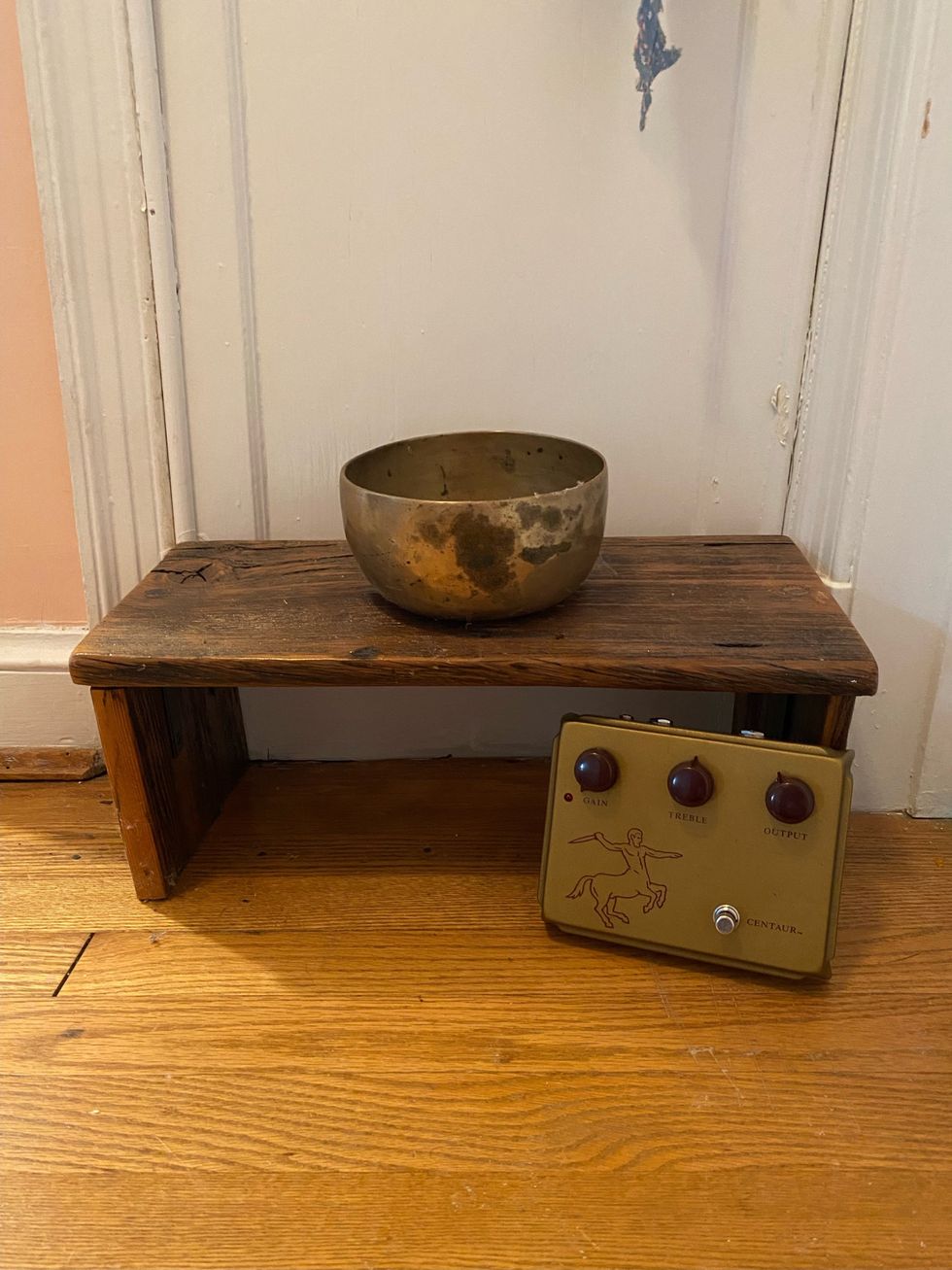
Excuse the pun: This Klon Centaur is Pirog’s workhorse pedal—part of all his stomp rigs.
Sure, the Messthetics are a rock band, but they often border on jazz—or cross that border. And Anthony’s playing, along with fellow guitarist Henry Kaiser’s, is stellar in the Mahavishnu Orchestra tribute fusion band Five Times Surprise, who’ve so far made just one album, also called Five Times Surprise. But Pirog is also an ace at playing traditional, post-bop jazz as well as the more radical approaches minted by his musical heroes Bill Frisell and Sonny Sharrock.
“When I was in my 20s, playing jazz gigs around the D.C. area and improv gigs in New York, I would just bring my entire, huge pedalboard,” Pirog relates. “Now I’m trying to be more mobile. I can use the Klon’s tone knob to dial back some of the top end even more than I probably would in any other setting. And I will sometimes use the gain knob to boost the signal, which also increases some low end, And then I like to use delay and reverb.”
His pedal array for jazz gigs:
• Klon Centaur
• Lehle volume pedal
• Pro Co RAT
• JAM Pedals Delay Llama (set at 16 ms, to fatten tone)
• Strymon Flint
Roots Board
Roots Board
Pirog is among the rare guitarists who can play in the style of Danny Gatton with the same finesse, touch, and balance of emotional restraint and blues-and-country-based wailing. And gorgeous tone. You can hear him exercise this side of his playing as part of the Spellcasters, in the group’s tribute to Gatton and another D.C.-area Tele giant, Roy Buchanan, on the album Anacostia Delta.
His board for Gatton-style gigs:
• Lehle volume pedal
• Klon Centaur (gain set at 10)
• JAM Pedals Delay Llama
• Strymon Flint (’60s reverb and ’61 harmonic tremolo settings)
And his amp of choice in this playing mode is a ’65 Fender Deluxe Reverb, with volume on 3, approximately.
Rig Rundown - Henry Kaiser's Five Times Surprise
Although he’s currently using a different array of pedals and amps, and a different guitar, too, this look at Anthony Pirog’s rig for the Five Time Surprise recording session is nonetheless fascinating. He leads us through it, at the start of this Rig Rundown.
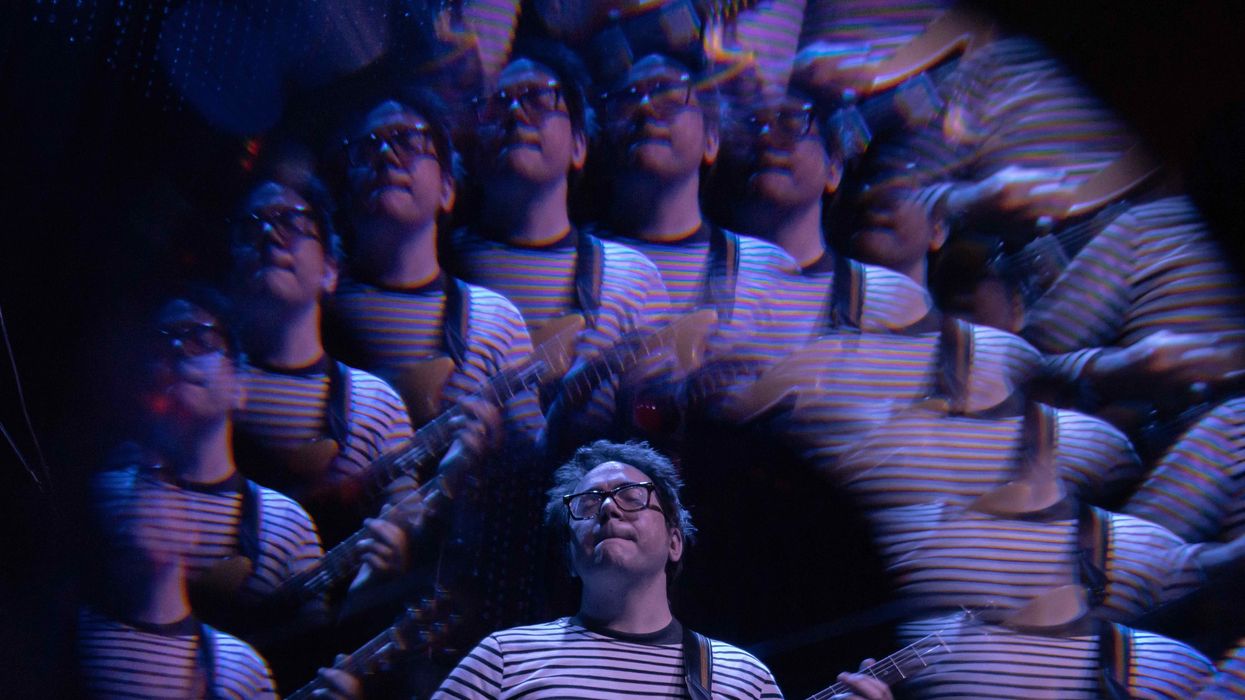




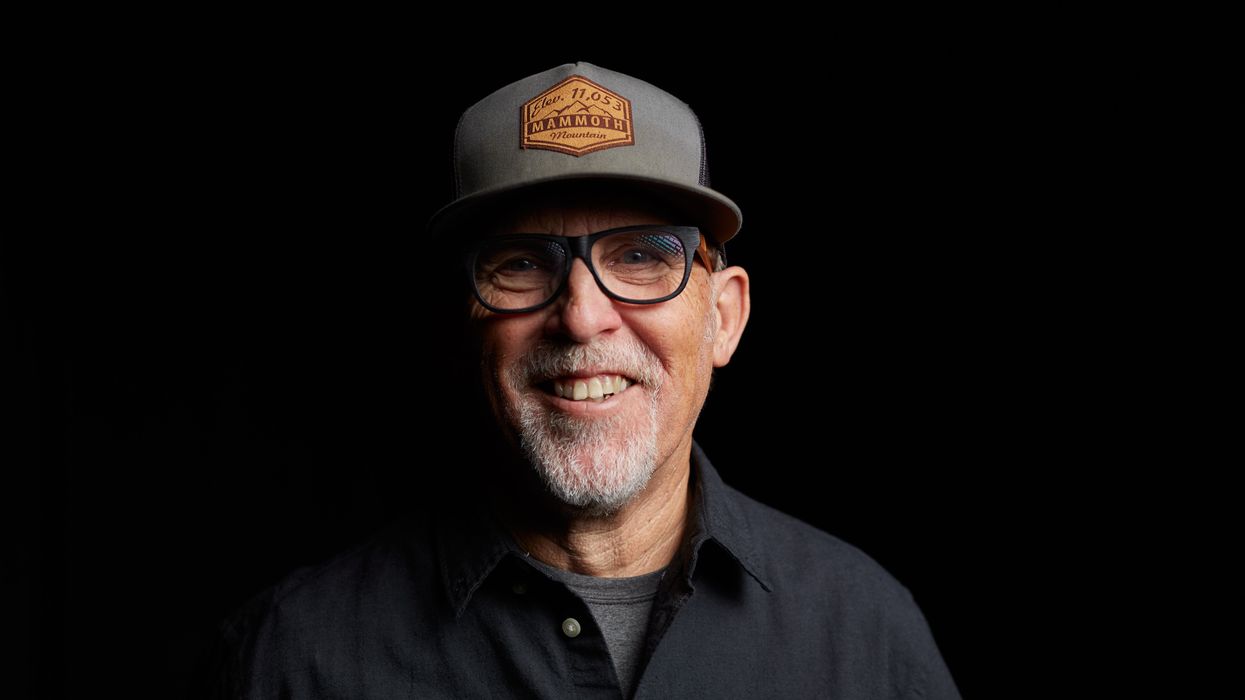





![Rig Rundown: AFI [2025]](https://www.premierguitar.com/media-library/youtube.jpg?id=62064741&width=1245&height=700&quality=70&coordinates=0%2C0%2C0%2C0)










